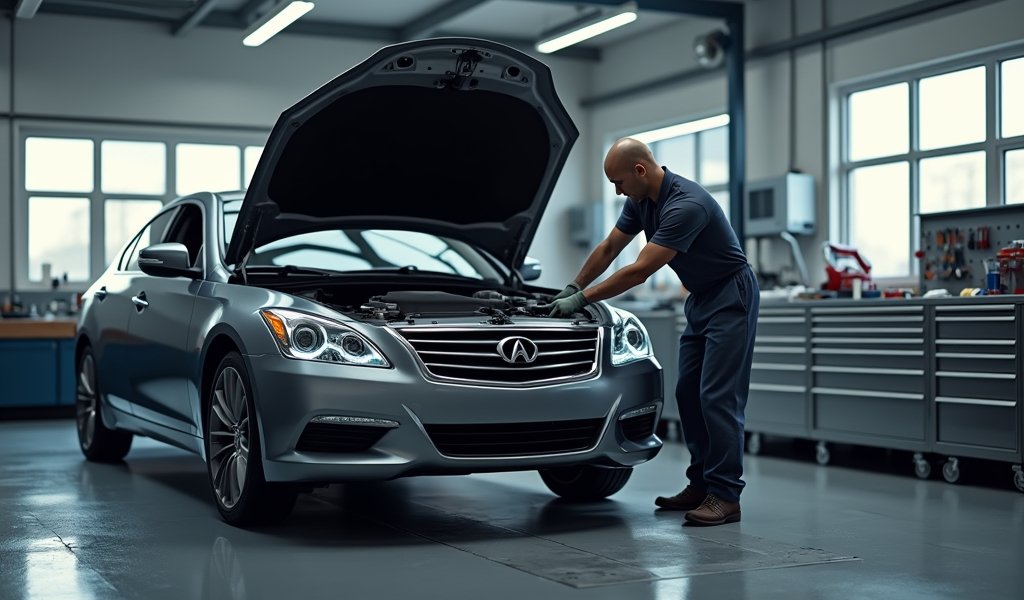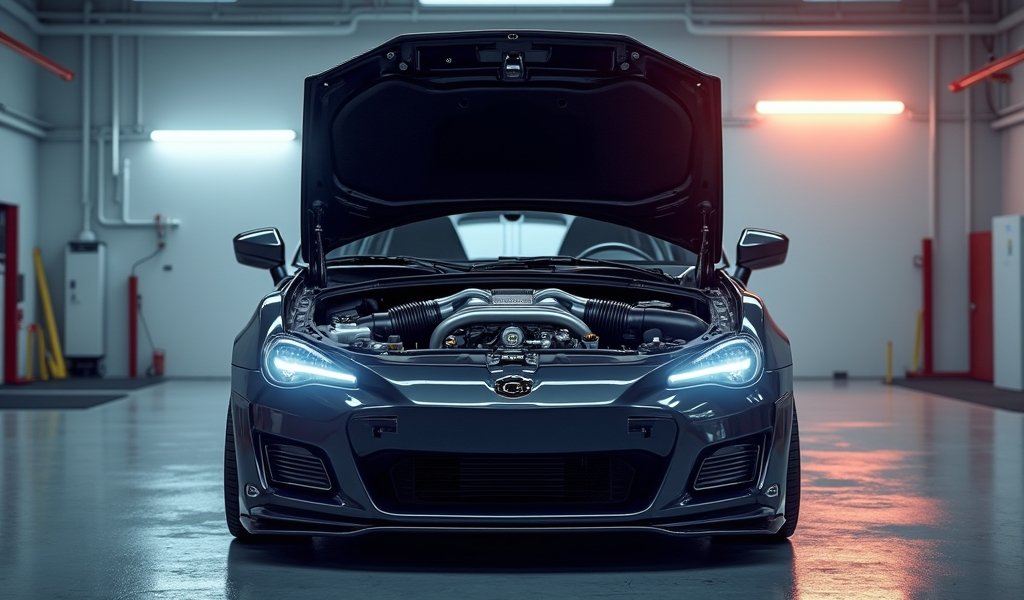Overview
This article provides five essential tips for maintaining a vehicle’s secondary air injection system, including regular inspections, addressing check engine lights promptly, making informed repair decisions, performing DIY maintenance, and finding qualified mechanics. The guide explains how this emission control system helps reduce pollution during cold starts, and how proper care can prevent costly repairs while maintaining environmental compliance and vehicle performance.
Table of Contents
- Understanding Secondary Air Injection: What It Is and Why It Matters
- Common Symptoms of a Failing Secondary Air Injection Pump
- Tip #1: Regular Inspection Can Save You Thousands
- Tip #2: Don’t Ignore That Check Engine Light
- Tip #3: Understanding the Repair vs. Replace Decision
- Tip #4: DIY Maintenance to Extend Pump Life
- Tip #5: Finding a Trustworthy Mechanic for Secondary Air System Issues
- Conclusion
- Frequently Asked Questions
Understanding Secondary Air Injection: What It Is and Why It Matters
Let me tell you about one of the most underappreciated parts of your car’s emission system – the secondary air injection pump. This little workhorse is basically your vehicle’s environmental guardian, helping to reduce harmful emissions when your engine is cold. I remember the first time I discovered what this part actually does – I was a young mechanic, baffled by why a seemingly perfect-running Audi kept triggering the check engine light. That was my introduction to the world of secondary air systems.
In simple terms, this system pumps fresh air into your exhaust stream during a cold start, when your engine is producing the most pollutants. This extra oxygen helps burn off those nasty hydrocarbons and carbon monoxide before they escape your tailpipe and float off into the atmosphere. Think of it as giving your catalytic converter a helping hand when it’s still waking up and not yet at its optimal operating temperature.
Now, I know what you’re thinking – “Why should I care about this pump thing I’ve never heard of?” Well, friend, besides keeping Mother Nature happy (and helping you pass those pesky emissions tests), a failing secondary air injection pump can lead to bigger problems down the road, including reduced fuel efficiency and potential damage to other components like your catalytic converter.
These systems became common in most vehicles around the mid-1990s, especially in European and American models. If you’re driving something made in the last 25 years, chances are you’ve got one of these pumps tucked away somewhere in your engine bay, quietly doing its job – until it doesn’t.
Common Symptoms of a Failing Secondary Air Injection Pump
So how do you know if your secondary air injection pump is on the fritz? Let me share some telltale signs I’ve seen countless times in my garage. Just last month, Mrs. Henderson brought in her Toyota with what she called a “weird airplane noise” at startup. Sure enough, her secondary air pump was screaming for retirement.
The most obvious symptom is that distinctive whirring or grinding noise during a cold start. It’s usually pretty loud and lasts for about 30-90 seconds after you turn the key. If your peaceful morning startup has turned into what sounds like a mini jet engine under your hood, your pump might be wearing out.
Another common sign is the dreaded check engine light making an appearance on your dashboard. Specifically, you might see fault codes like P0410, P0411, or P0412, which all point to issues with the secondary air system. Your car’s computer is pretty smart about detecting when this system isn’t working right.
Failed emissions tests often bring these problems to light too. If your vehicle suddenly can’t pass the test despite running seemingly well otherwise, the secondary air system could be the culprit. Higher emissions during cold starts are exactly what this system is designed to prevent.
Some vehicles might also experience rough idling during warm-up or even stalling if the system is severely compromised. This is because the air-fuel mixture can be thrown off by a malfunctioning air injection system.

Tip #1: Regular Inspection Can Save You Thousands
The first and perhaps most valuable tip I can offer is this: don’t wait for problems to appear. Including the secondary air injection system in your regular maintenance checks can save you from an expensive repair bill down the road. It’s kind of like dental checkups – a little prevention beats a root canal any day of the week.
I’ll never forget when my brother-in-law ignored that peculiar noise in his BMW for months. By the time he finally brought it in (after much family nagging), what could have been a simple hose replacement had escalated to a complete system overhaul, costing him over $1,800. Don’t be like my brother-in-law.
During your vehicle’s routine service (ideally every 30,000 miles or so), ask your mechanic to:
- Check all air injection system hoses for cracks or leaks
- Inspect electrical connections for corrosion
- Test the pump’s operation during a cold start
- Scan for any pending codes that haven’t triggered the check engine light yet
This inspection usually takes just 10-15 minutes but can identify problems while they’re still small and manageable. Some modern vehicles have self-diagnostic capabilities that can alert you to potential issues before they become serious. If your car offers this feature, don’t ignore those notifications!
Most reputable shops will include a basic check of this system during comprehensive inspections, but it never hurts to specifically ask. According to data from the Department of Energy, regular maintenance of emission systems can improve fuel economy by up to 4%, which means this small inspection could actually save you money at the pump too.
Tip #2: Don’t Ignore That Check Engine Light
I know, I know – that little orange glow on your dashboard is easy to ignore, especially when your car seems to be running fine otherwise. But when it comes to secondary air injection issues, that check engine light is trying to tell you something important.
About five years ago, I was guilty of this myself. My trusty old Volkswagen lit up like a Christmas tree, but everything seemed fine, so I just kept driving. Two months later, I was facing not just a pump replacement but also a damaged valve and – you guessed it – a compromised catalytic converter. What could have been a $400 fix ballooned to over $1,500.
When that light comes on, get it scanned as soon as possible. Many auto parts stores offer free code readings, or you can invest in an OBD-II scanner for home use (they’re surprisingly affordable these days). The specific codes to watch for include:
- P0410: Secondary Air Injection System Malfunction
- P0411: Secondary Air Injection System Incorrect Flow Detected
- P0412: Secondary Air Injection System Switching Valve A Circuit Malfunction
- P0418: Secondary Air Injection System Relay A Circuit Malfunction
These codes give you and your mechanic valuable information about what’s actually going wrong. Is it the pump itself? A valve? An electrical issue? Knowing this can prevent unnecessary parts replacements and save you money.
Even if the light occasionally turns off on its own (which happens), the problem is still logged in your vehicle’s memory. A proper car diagnostic service can retrieve these stored codes and address issues before they worsen. Research from Car and Driver suggests that addressing check engine lights promptly can reduce repair costs by an average of 30%.
Tip #3: Understanding the Repair vs. Replace Decision
When your secondary air injection pump starts acting up, you’ll face an important question: should you repair components of the system or replace the entire pump? This decision isn’t always straightforward, and understanding your options can save you both headaches and money.
In my experience, secondary air injection issues aren’t always the pump itself. Often, it’s the connecting hoses, valves, or electrical components that fail first. I once had a customer ready to shell out $800 for a new pump when the actual problem was a $15 vacuum hose that had cracked from engine heat. Twenty minutes of labor later, his system was working perfectly again.
Here’s a quick breakdown to help you make this decision:
- Consider repair if: The pump motor sounds normal but the system isn’t functioning, there’s a check engine light but no noise issues, or the vehicle is less than 5-7 years old
- Consider replacement if: The pump makes grinding or screeching noises, there’s visible damage or corrosion on the pump, or your vehicle is older with high mileage
The age of your vehicle matters significantly in this decision. In newer vehicles (less than 10 years old), component repairs often make more financial sense. For older vehicles, a complete replacement might provide better long-term reliability.
Cost is obviously a factor too. A complete pump replacement typically runs between $300-$1,000 depending on your vehicle make and model. European models like Audi, BMW, and Mercedes-Benz are usually on the higher end of this range. Component repairs might cost as little as $100 for simple issues or up to $400 for more complex ones.
If you’re handy with tools, some secondary air system issues can be DIY projects – particularly hose replacements and basic electrical connections. However, accessing the pump itself often requires significant disassembly, so consider your skill level before diving in. The EPA recommends that emissions-related repairs be performed by qualified professionals to ensure environmental compliance.
Tip #4: DIY Maintenance to Extend Pump Life

Even if you’re not a mechanic, there are several simple maintenance tasks you can perform to help extend the life of your secondary air injection pump. I’ve been teaching these techniques to my customers for years, and those who follow them typically see much longer service from their systems.
First and foremost, regular engine warm-up practices make a big difference. I learned this lesson the hard way with my own truck years ago. I used to start it up and immediately hit the road in those cold Minnesota winters. After replacing my secondary air pump twice in three years, I changed my habits to allow a proper 30-60 second warm-up period before driving, especially in cold weather. My current pump has been going strong for over seven years now.
Here are some practical DIY maintenance tips:
- Allow your engine to idle for 30-60 seconds before driving in cold weather
- Visually inspect accessible hoses and connections every 6 months
- Keep the engine bay reasonably clean – excessive dirt and oil can accelerate component wear
- Address any unusual sounds during startup immediately
- Consider using a battery tender in very cold climates if your vehicle sits unused for extended periods
One often overlooked factor is the condition of other components in your emissions system. A clogged air filter can put extra strain on your secondary air pump, causing it to work harder and wear out faster. Simply replacing your air filter according to your manufacturer’s recommended schedule (typically every 15,000-30,000 miles) can significantly extend pump life.
If you’re comfortable with basic vehicle maintenance, you might also consider periodically cleaning the area around the pump and its electrical connections. Dirt and moisture can lead to electrical issues that affect pump performance. A bit of electrical contact cleaner on the connections (with the battery disconnected, of course) can prevent problems down the road.
For those with older vehicles, protecting your secondary air system from moisture is particularly important. According to studies from SAE International, water intrusion accounts for approximately 25% of secondary air system failures in vehicles over ten years old.
Tip #5: Finding a Trustworthy Mechanic for Secondary Air System Issues
When DIY maintenance isn’t enough and you need professional help with your secondary air injection system, finding the right mechanic becomes crucial. This isn’t always as simple as picking the closest shop or the one with the flashiest advertising. Secondary air systems require specific knowledge that not all mechanics possess in equal measure.
I still remember when my neighbor Sarah took her Audi to three different shops before finding someone who correctly diagnosed her secondary air issue. The first two shops quoted her for complete pump replacements at over $900 each. The third mechanic identified a simple valve problem that cost just $175 to fix. Seven years later, that same repair is still holding strong.
Here’s how to find a mechanic who won’t steer you wrong:
- Look for shops that specialize in your vehicle’s make, particularly for European models
- Check for ASE certification, especially in engine performance and emissions systems
- Read reviews specifically mentioning emissions system repairs or check engine light diagnostics
- Ask if they have the specific diagnostic equipment for your vehicle’s secondary air system
- Request an explanation of their diagnostic process – good mechanics will take the time to explain
When you visit a shop, be wary of immediate recommendations for complete system replacement without proper diagnostics. A thorough evaluation should include scanning for codes, testing the pump’s operation, checking electrical connections, and inspecting the related valves and hoses.
Don’t be afraid to ask questions like:
- “What specific tests did you perform to diagnose this issue?”
- “Can you show me the faulty component?”
- “What are my repair options at different price points?”
- “Is this repair absolutely necessary right now or can it wait?”
A trustworthy mechanic will welcome these questions and provide clear, non-technical explanations. They should also be willing to prioritize repairs if you’re on a tight budget, distinguishing between what needs immediate attention and what can wait.
Finally, consider seeking a second opinion for major repairs. The small cost of an additional diagnostic fee could save you hundreds on unnecessary work. According to Consumer Reports, getting multiple quotes on significant repairs saves drivers an average of 20% on repair costs.
Conclusion
Taking care of your vehicle’s secondary air injection pump doesn’t have to be complicated or intimidating. With these five tips in your back pocket, you’re now equipped to handle this often-overlooked but important component of your car’s emission system. From understanding the early warning signs to finding the right professional help when needed, you can save yourself time, money, and frustration.
Remember, this small pump plays a big role in keeping your vehicle environmentally friendly and running smoothly. By incorporating these simple maintenance practices into your regular vehicle care routine, you’ll likely extend the life of not just your secondary air injection pump, but potentially your catalytic converter and other emissions components as well.
I’ve seen firsthand how proactive attention to this system can make the difference between a quick, affordable fix and a major repair headache. Whether you’re driving a BMW, Ford, Toyota, or any other modern vehicle, these principles apply across the board.
I’d love to hear about your experiences with secondary air injection systems. Have you dealt with issues in the past? Do you have questions about symptoms you’re currently experiencing? Drop a comment below to share your story or ask questions. Our team of mechanics is always happy to provide personalized advice based on your specific situation. And if you’re experiencing issues right now that have you concerned, don’t hesitate to schedule a consultation with our expert technicians who can help diagnose and resolve your secondary air system problems quickly and effectively.
Frequently Asked Questions
What exactly does a secondary air injection pump do?
It pumps fresh air into your exhaust system during cold starts to help oxidize pollutants before they leave your tailpipe. This reduces harmful emissions while your catalytic converter is still warming up to its optimal operating temperature.
How much does it typically cost to replace a secondary air injection pump?
Replacement costs typically range from $300 to $1,000 depending on your vehicle make and model. European vehicles generally fall on the higher end of this price range.
Can I drive with a failed secondary air injection pump?
Yes, your vehicle will still run, but you may fail emissions tests and potentially damage other components long-term. You’re also likely to have a persistent check engine light.
How long should a secondary air injection pump last?
With proper maintenance, these pumps typically last 60,000 to 100,000 miles. Regular warm-ups and addressing minor issues promptly can significantly extend this lifespan.
Is it possible to delete or bypass the secondary air injection system?
While technically possible, it’s illegal in most states as it violates emissions regulations. Such modifications can result in failed inspections and potential fines.


Pingback: diesel particulate filter regeneration? - knowsyourcar.com